Existing User Log In
New User Registration
Register for a free account to gain full access to the VGChartz Network and join our thriving community.



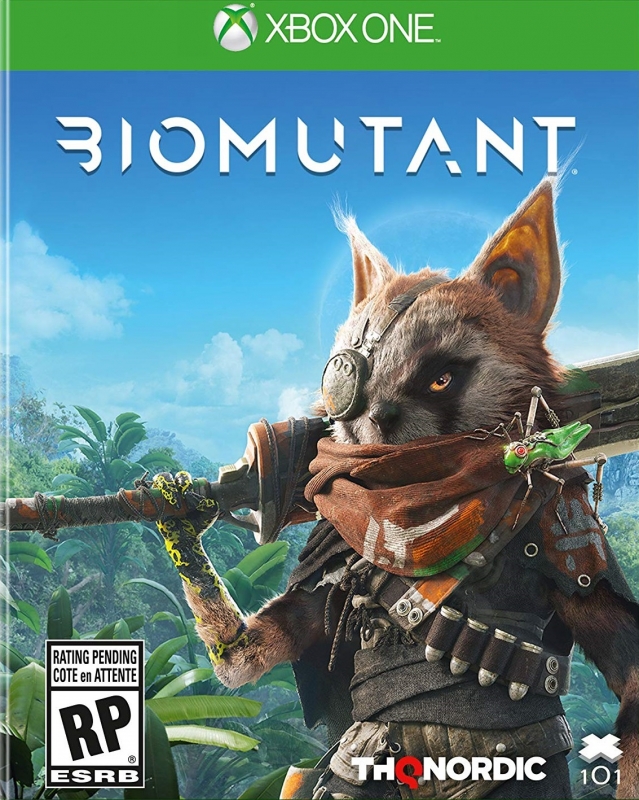

America - Front


America - Back

Experiment 101
Role-Playing
 03/31/19 THQ Nordic
03/31/19 THQ Nordic  (Add Date)
(Add Date) 03/31/19 THQ Nordic
03/31/19 THQ Nordic
| Owners: | 0 |
| Favorite: | 0 |
| Tracked: | 0 |
| Wishlist: | 0 |
| Now Playing: | 0 |
Reviewer note: the majority of my time was spent playing the 1.3 version.
Developing a big-budget open-world game with a small team seems like a daunting task on its own; now imagine that with virtually 20 different design inspirations in tow. Apropos of its name, freshmen developer Experiment 101 sought out to make a feature smorgasbord with a post-apocalyptic setting filled with mutated animals; think a colorful synthesis of Fallout & Redwall at a glance. But beneath all of the checklists that could impress even the most cynical of critics, Biomutant reveals that these bullet points can look like a motley collection of junk DNA without proper execution. Its ecological admonition about cleaning up one’s mess rings just as true for its development.
You play as an amalgamation of a raccoon/rodent/lemur. After escaping the clutches of a gargantuan beast in the wilderness, you navigate through Bunker 101 and assist an elderly sloth-like character named “Out-Of-Date”. You're then tasked with saving The Tree of Life from four World-Eaters, huge creatures slowly gnawing on its roots across different corners of the land. Layered on top of this, Out-Of-Date informs you of the six disparate furry factions that are divided between restoring and ending the tree.
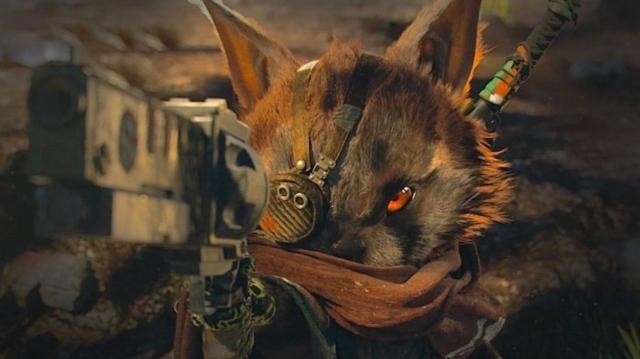
What could've been a serviceable long-form apologue weighing environmental responsibility is dampened by poor storytelling decisions.
It tackles some great ideas in concept. The light/dark morality system tied with an advertised Kung-Fu emphasis and Eastern attire harkens back to Jade Empire. There's simplistic clarity in understanding the beginning Myriad (light) and Jagni (dark) tribes, the former emphasizing preservation and the latter destruction as a means of renewal. The permutations around the other four tribes are hazier, but this starting foundation ties in to your character’s angel/demon dichotomy. It's also visually satisfying to view the world map and see each of the World-Eaters chewing on the tree in real time.
These succinct starting points begin to crumble under any scrutiny though. The morality system is a cheap facsimile of better titles, which isn't helped by the patronizing dialogue either. The talents of Alix Winton Regan (as Light Aura) and Alex Jordan (as Dark Aura) are wasted with meaningless bickering about how their side is best. It's funny just how tonally contradictory this system often works throughout the narrative too. One of the most flagrant grind quests here involves you rescuing various captives across the map. After killing their captors, freeing them gives you a binary choice: punch them or let them go. What's the point of all that trouble to free someone and subsequently punch them? How did a side quest revolving around potentially hurting 20+ caged creatures for kicks get past their filters?
Conversely, where it's more toothless is with the faction quests. On paper, the six tribes have tweaks in their moral code and what means they’re willing to go for their desired ends. Some are greyer in approach while others strive for incredibly light/dark polarities. I partnered with Myriad, the ultra-light camp, for my first playthrough. Halfway through the faction conquest, there came a neat fork in the road: begin peace talks with all factions I hadn't fought yet or succeed through violence. I chose the latter. So now this supposedly peace-pursuing tribe was following my unnecessary pursuit for battle with little hesitancy. Imagine how things would look if there were tangible consequences. Maybe not seeing eye-to-eye with a leader on crucial decisions could result in no longer being allies. The chance for a pared-down Game of Thrones-style dynamic is totally missed here.
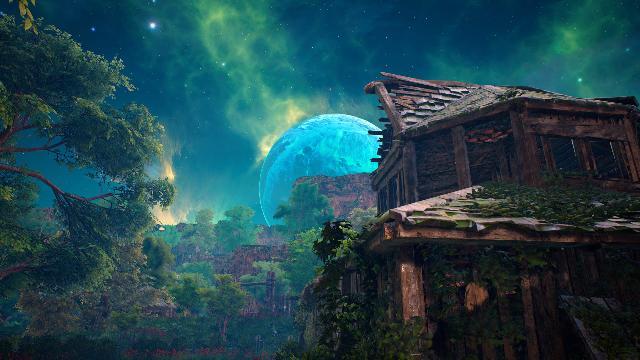
Another all-encompassing issue is what I'll call the two-tiered dialogue delivery. Every animal in Biomutant speaks in nonsensical patter and your robotic cricket companion translates everything for you. For example:
Random character #1: Abba see-to mala… yada yada yada
Companion: He said lovely weather we're having.
Experiment 101 has made it so that all dialogue outside the light/dark dynamic is relayed through British actor David Shaw-Parker. I'd give more credit to this unorthodox dedication were it not so misguided. Eventually dialogue options become a game of attrition where you skip over the spoken gibberish, read the subtitles before your translator finishes talking, and repeat ad nauseam. Since skipping the nonsense talk doesn’t stop the original speaker, sound mixing for both the foreign language and translation will bleed together. Eventually you just train yourself to move past it. The term "Ludo-narrative dissonance" can apply to this odd decision as well. Since it's quickly revealed you lived here as a kid and can apparently reply back without your automaton buddy, why would you need a spoken translator app to understand anyone? Isn't it more appropriate to structure it like Banjo-Kazooie?
Storytelling flaws don't stop at repeating information but also extend to over-emphasizing emotional beats. The "show, don't tell" lesson for writers is taken to another level here. Biomutant's idea of "telling" is tying a goddamn documentary to every important moment. Your character goes through tremendous hurdles as a kid to escape a villain and then it's like David Attenborough orating the meaning behind those trials: "in time we all learn to find within ourselves the means to strive ahead, to become who we truly are, to inspire those who surround our short lives, to find meaning." That's neat and all... but can you ease off on the sententious rhetoric? I’m trying to process what happened.
In many ways, I'm fascinated by writer Stefan Ljungqvist's over-zealous attitude to such imprudent means of storytelling. What could’ve been a serviceable narrative playing out a power-fantasy of ecological salvation/destruction with anthropomorphic animals becomes this strange concoction of ideas to avoid. Even positives like silly character archetypes are diminished by the dual-layered dialogue. How does any side character have a unique voice when they're all filtered through the same translator with the same intonation? Tie those stated issues in with repetitive line delivery about you "having a glimmering spark that's lived on since you were young" from practically everyone you meet, among other expected tropes, and you get this cavalcade of perplexing writing decisions.
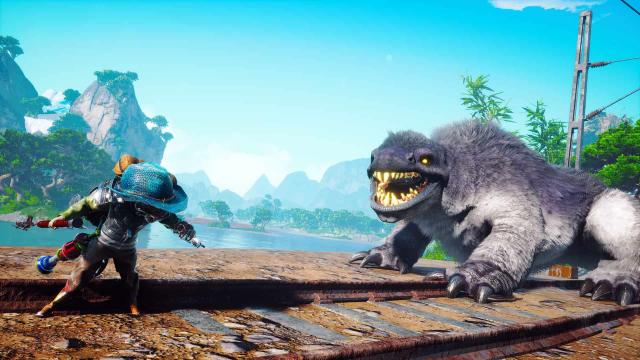
Almost acting as a countervailing force to these story frustrations, Biomutant's world design makes traversing far more enjoyable by comparison. One of the biggest selling points THQ Nordic's PR is happy to bring up about this world is its eight square kilometer size. While "going big" like that can signal gameplay misgivings, the imposing volume and varied landscapes is the clearest sign of the development team’s artistic ability. When it's not fumbling over needless exposition, the quieter moments with this atmosphere and Björn Palmberg's Zen soundtrack have their own mini-stories to tell. In the steppes, swamps, or beyond, either the Tree of Life's magnificent stature or one of its tremendous roots cutting through the hillside are within view – continually reminding you of its importance.
It's fair to note that the technical visuals don't measure to similar genre landmarks like Ghost of Tsushima or Assassin’s Creed Valhalla. A team this size isn't capable of it. But it's in the creativity, not visual fidelity, that Biomutant excels. As mentioned previously, I really like the synthesis of cute-n-cuddly with the post-apocalypse. Whether it's fur color, overly-emphasized head/arm/leg sizes, or facial features, the flexibility granted to your bipedal grimdark Eevee template is truly impressive. There's also a wide-ranging bestiary and great aesthetic variety to modified gear and weapons (more on that later). That isn't to say there are no shortcuts utilized; the repeated skins of low-tier tribal warriors and drab sewer interiors are chief examples that show otherwise.
Sneaky maneuvers of recycling assets freed up time for a panoply of wonderful extras, several of which I didn’t even discover. The most consistent pull for me to continue forward was the different terrain to explore, another goofy mount to acquire, or something else that would visually surprise me. That's a testament to this smaller team's ambition: I never felt as though they ran out of creative fuel in this respect.
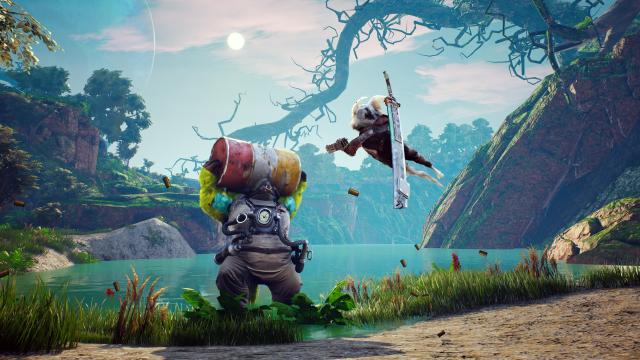
Despite adopting more familiar lessons in its Action-RPG/Ubisoft open-world template than its storytelling, the gameplay is no less cautionary. The opening salvo of character sheets to consider are a good primer for the combat. These are split between three considerations: melee, shooting, and bio/psionic powers. From the outset, thinking about yourself as a rodent battle mage or some other combination sounds exciting. The reality is certain tactics don't coalesce into a winning formula due to inconsistent balances and uneven levels of stimulation.
No more than five minutes after finishing my extensive character sheet, my first problem arose with the tutorial boss: drowned-out sound mixing. Granted, my buff Saboteur only had two thin Sais as melee weapons; further along in this tutorial, I worried something was off on my end. Continuing forward, with enemies getting licks in against me, it became eminently clear that dampened sound design was the culprit. Which is weird to admit because it's been a while since a $60-priced game (that I've reviewed) did much worse than have inconsistent or buggy audio issues. Even though psionic powers & guns fare better, it's crucial to internalize that every fight won't land with the right amount of aural satisfaction – barring an upcoming update.
What's a tougher culprit to pin down for someone watching gameplay clips is the camera. Since there's no designated lock-on ability, the enemy you're temporarily targeting is designated by a "soft lock" with the right control stick. Since this also controls general camera movement there's this looseness in targeting against enemy groups; think of a more awkward Batman: Arkham set-up. It's especially annoying to deride this when the expressive melee animations and comic-book-esque "BAM!" text flies on the screen during a combo. This problem is lessened for shooting and psionic abilities, but that means I had to shift tactics away from what I originally wanted. Experiment 101 made a wonderfully exciting action template for YouTube before the player experience.
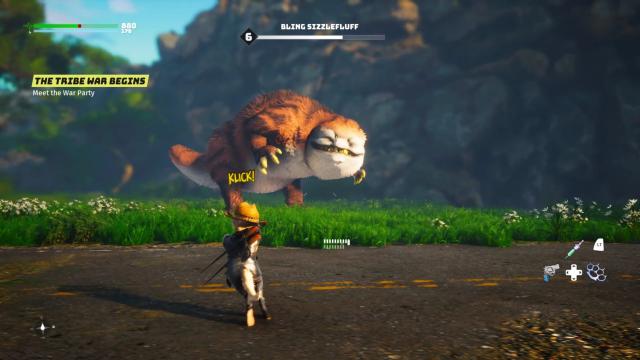
I've spoken about the world's visuals, but how the player influences the world will likely be more contentious. The Ubisoft DNA remains relatively untouched here, so be warned if that design ethos doesn’t click for you. The advertised vastitude also results in several pockets feeling barren compared to their counterparts. I think there's a line between being “empty” and “quiescent” that shouldn’t be overlooked. Sure, special locales and roaming enemies are scattered like in an MMO, but there are various exploratory challenges that tempt you into investigating more of the world. With restricted areas demanding a specific item or mount upgrade to continue, there is a carrot on the stick beyond the main objectives. It’s not very sophisticated nor consistent, but it gels with the calmer atmosphere when roaming around.
The loot-driven focus leads to one of the few exceptional features: an incredibly modular & creative crafting system. Whether by paying merchants or scrounging through trash, you're capable of assembling wonderful melee and ranged combinations. Finding a radioactive-infused shotgun then adding a Christmas-themed bump stock, a cordless drill as a grip, and a toy satellite muzzle made the ridiculous hoarding feel worth it. The near-limitless permutations highlight your recycling skills like nothing else here. Less enjoyable is the arbitrariness between upgrading and placing add-ons for armor & weapons. Strapping add-ons is done via the character screen whilst getting an incremental quality or material buff can only be done via workbench for some odd reason. Also, what help is it to use baby talk like "Pow-Wow III" in describing a stat? Considering how resource-demanding some buffs can be, I eventually ignored benches altogether for hopes of better loot.
The varied landscape also results in hazardous places that can kill you if remaining too long. The design around elemental resistances has no consistent viewpoint. On top of being able to upgrade your resistance to fire, ice, radioactive, and biohazard via Bio Points and gear, you're able to find hazard-specific suits. So, now you have five special fetch quests (oxygen suit included) to maneuver through areas you can typically ignore. And since suits, especially the headgear, are weaker than your combat gear you've now put yourself at a tactical disadvantage; on top of that, now there are five unique items clumping up your headgear, torso, and legs inventory. It becomes a management mess after considering the other armor you want to keep.
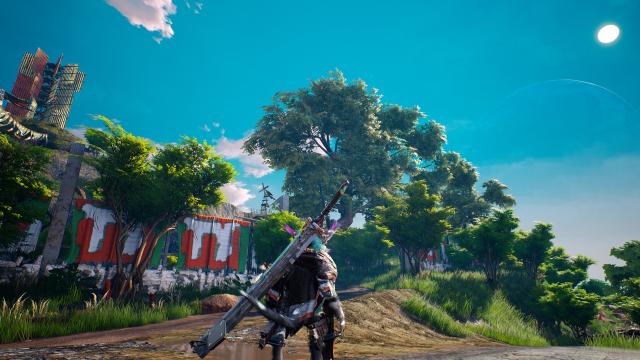
Despite regaling you with a bunch of design annoyances, there were some special times where genuine engagement kicked in. Bear with me. Sure, the beginning hours left a rough impression – to the point of needing to take a break every hour. Then I got a mech. I had some carefree fun shooting baddies in the oxygen-deprived zone, scoured the environs, fought the first boss, and moved on from there. There's a brief lull in enjoyment until the next World-Eater is promised. Now, I'm minding my own on an acquired jet ski until I stumble on a burning village, save its people, and restore houses back to normal. Both the newfound freedom of the vehicle and some side quests sprinkled in this area were fun distractions. These portions in my 24-hour playthrough made me genuinely wonder if it could keep this up. After repetition settled back in, those times looked farther and farther in the rearview mirror.
There are multiple one-off praises and complaints I have on top of this, but I already worry that this review is becoming its own checklist. Whether I'm looking at pleasant discoveries the game keeps hidden or obnoxious choices like one-hit KO special attacks from bosses (on Hard difficulty), I'm still left annoyed at how much the development team tried to manage. I've occasionally appreciated 'kitchen sink' game design in the past, but Biomutant is the foul end of that realization. The infrequent times it coalesced into something better than its collective faults was a sight to see... until it wasn't anymore. This goopy mass of ideas is just design detritus that no one decided to clean up.
If you're committed to the dollar-per-hour value then Biomutant will only be as rewarding as you're willing to tolerate it. Since there's a healthy amount of early-game loot that could stay with you to the end of the game, I could see someone reaching the checkered flag in 10 hours. For someone like me who's put in almost 25 hours, completed the main campaign, and still has a map littered with quest markers, I wouldn't be surprised if a completionist run could climb up to 50 hours. A related value issue that's been nagging me is the corporate decision to lock one of best characters classes (Mercenary) behind a pre-order code. It's more than likely releasing as a DLC pack soon, which just further annoys me.
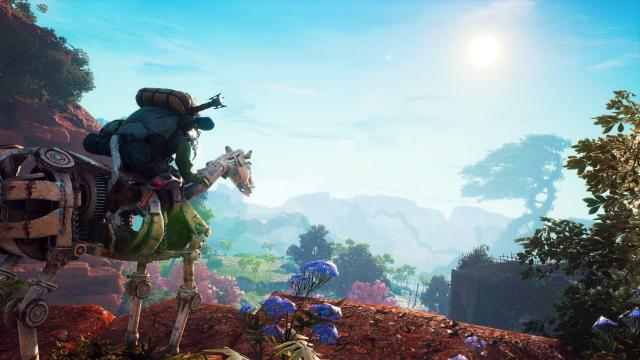
In sum, I hate how Experiment 101's debut wound up here. It’s great when middle-market studios make a case for creativity over sequels, and I try to give due credit accordingly. But clemency is not that simple for titles polluted by unchecked ambitions. On occasion, Biomutant's open-world junk food would satiate my cravings – especially when appreciating its splendid art design, but ultimately the fumbles across storytelling, gameplay, and more kept gradually depreciating those highlights. There's a lesson to learn from these examples: instead of forcefully uniting dozens of inspirations, let design-evolution take its course for the strongest elements to win out.
Despite being one of newest writers on VGChartz, Lee has been a part of the community for over a decade. His gaming history spans several console generations: N64 & NES at home while enjoying some Playstation, SEGA, and PC titles elsewhere. Being an Independent Contractor by trade (electric, plumbing, etc.) affords him more gaming luxuries today though. Reader warning: each click given to his articles only helps to inflate his Texas-sized ego. Proceed with caution.









